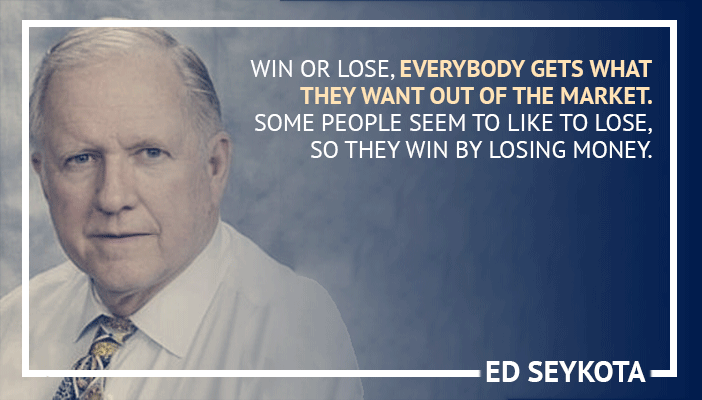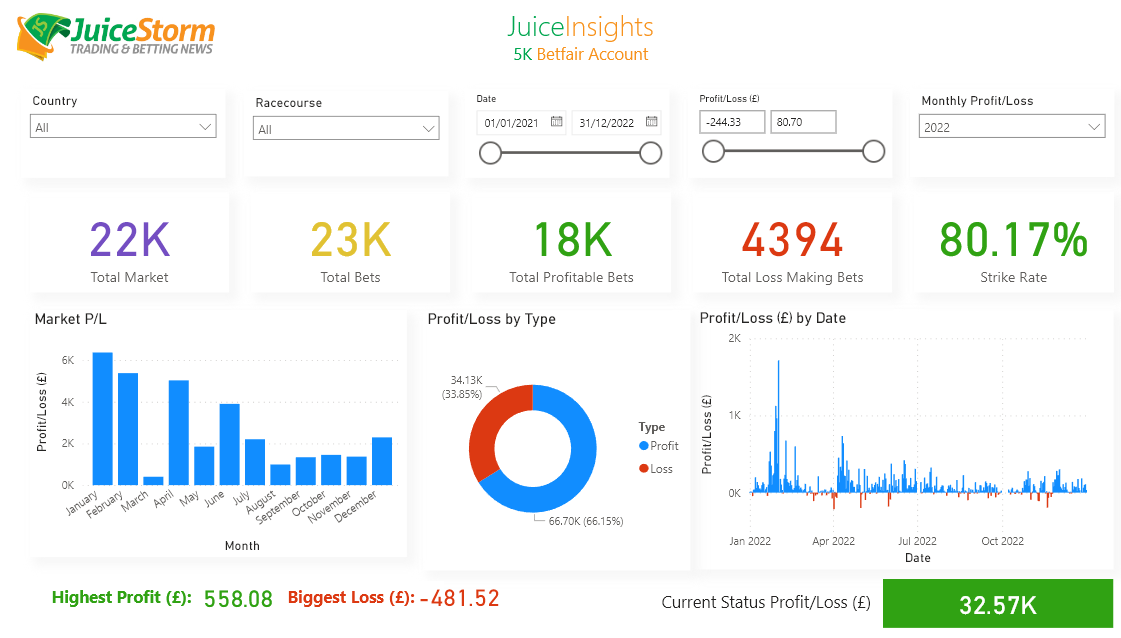Trading Horses – What to Look For
- The TopTrap Greyhound Profit And Loss Account On Betfair - March 17, 2022
- Betfair Best Execution – 11 Requested & Filled At 320 - January 16, 2022
- BTB System e-book - March 13, 2015
I am assuming that you have read my article “Trading Horses – some basic tips“. I will not be repeating information which is in that post. I am also assuming that you are using some form of trading software. Pre-race trading will not work very well on the Betfair website.
Everything in this post is my personal opinion, formed after hours of watching prices move on Betfair. I have set out the factors that I use to determine how and when to trade. Other traders may strongly disagree with some of my statements and logic, and that is fine. Trading is all about opinion.
Please remember that any form of trading is risky. There will be plenty of times when you follow all the basic “rules” and still lose money. There are plenty of races where whatever you do you seem to get it wrong. There may be ways of identifying these, and sometimes there are warning signs, but sometimes the market just seems to behave in a bizarre way for no apparent reason. In these cases the best thing to do is to move to another race, but the temptation to chase your losses is huge.
Learn to look at the big picture, not the individual race or trade. If you find yourself chasing losses, getting frustrated and annoyed, or doing stupid things (we all do this), stop, make a cup of coffee, go for a walk, do something different for a bit and let yourself calm down. Your state of mind is the single most important factor in determining your level of success, and you need to learn to be aware of when this is affecting your judgement.
Selecting a race
All races have odds and would appear to be fair game for trading. However there are some warning signs which should alert you that things might very quickly go pear shaped.
The most important factor is the amount of money matched on the market and on the individual selections. If you are looking at a foreign race or some of the Irish races you may find there is only a coupe of hundred quid matched on the whole market, or double figures only on anything other than the favourite. These are dangerous for 2 reasons – firstly the market can suddenly swing and catch you on its way, and secondly you may get the first half of the trade matched, but there may be insufficient money around to match the 2nd half of the trade and you might have to take a very poor price to get matched at all. Bear in mind too that some foreign races (especially USA) do not go in play, and can start slightly early. You can be left with half a trade matched and nothing you can do about it. I personally do not like to trade any individual horse with less than about £1000 matched on it.
The spread of odds is also important. I tend to be wary of races with very short priced favourites, since there is often little money available on the longer priced horses, and a sudden change in odds can catch you out. This is particularly true of races with very few runners (less than about 6), where I find there are often short term sharp changes in the markets, which don’t recover. Very short prices win you very little indeed per tick, and can move several ticks with alarming speed. Races I would almost always reject at a glance are:
A long odds on favourite, one horse in the 4-10 range and everything else at 20+ (see above)
2 or 3 horses in the 2-4 range and everything else in double figures (small rewards for big risks)
Big races with high liquidity especially with several closely matched favourites above or around 10 (difficult to see what is happening, takes ages to get matched and huge bets can suddenly arrive).
Place Markets
The place markets have much lower liquidity and lower odds. There are usually big gaps between back and lay available, and sometimes you can find the last traded price flicking between these. I learned to trade on the place markets using £2 stakes – you can hardly lose a lot doing this. However, you won’t win a lot either, so while I would recommend it as a practise ground away from the sharks, it isn’t going to return a decent long term profit. You can also find there are sudden huge spikes up or down because the money on offer is very limited. My own personal trading tactics were developed after observing the behaviour of these spikes and transferring that logic to the very much more scary win markets.
Selecting the horse(s)
The number of horses you choose to trade will depend on your level of experience and confidence, and the shape of the market (ie the spread of odds). Each race is different and needs to be assessed on its own merits. The factors which influence which horses I decide to trade and where I put my first bet include odds, weight of money, liquidity, support and resistance points, previously matched prices, bookies prices and steamers.
I go to a market with the intention of trading it any time between 30 and 5 minutes before the off. I feel that if I start looking at the market with less than 5 minutes to go I have not had enough time to absorb the market trends and “feel” to cope with the amount of activity at that point. This doesn’t mean I won’t immediately place a bet in a market if I see a suitable opportunity, just that if I am going to do that it won’t be so close to the off.
The best way to get a feel for what I mean is for me to show you some sample races. These will (I hope) demonstrate what I mean by each of the influencing factors mentioned above.
Race 1
I wish I had taken a shot of the whole screen, but this horse shows what I might do early on, and pinpoints several of the things I am looking for when I place my first bet on the market. Only 2 bets have been matched on this horse since I started looking. Liquidity is fair ( this is about 12 minutes before the race is due to start) – there is over £8000 matched on this horse.
Look at the matched money indicators on the left of the screenshot. The horse is trading at the bottom end of the matched range and although the last traded price is 7.4 (in yellow at the top), there is already money waiting at 7.2. Weight of money (% figures at the top) shows almost 2/3 pushing upwards and 1/3 pushing down which would imply that the price will go up, but I have found this most unreliable. I’m hoping this horse will come down 3 ticks for long enough to match me at 6.6, and I’ve chosen 6.6 for 2 very important reasons. Firstly it allows me to get near to the front of the queue (£27 there including my £10) and secondly I know that because we are at the bottom of the price range, this horse is likely to be 7 at some of the bookies. 6.8 is an arb for those on low commission, so if the price drops to 6.6 it is likely (although by no means certain) to go into reverse. There is also a comforting £149 at 6.4, but be aware that such things can vanish in a flash.
Now let’s move on a bit and look at what happens a couple of minutes later:
The favourite is on the drift, and the next 3 horses in the betting are coming down as a result. The weight of money on The Best Mode has pushed its price up to start with (this does not always happen), but as I thought, it then came down. It didn’t hang about long at 6.8, which implies that the bookies had cut the odds before they dropped to 6.8 at Betfair. Because I was at the front of the queue, I was able to trade out at 6.8 before the price fell again, and I’m now lying in wait at 5.9 (again near the front of that queue). If money started to pile on the back side and the price fell fast towards 6, I would move my bet down a notch into the empty space at 5.8. Most of the money on top of me at 5.9 was at 5.8 when I placed this bet. I’ve also added a speculative bet at 8.6 on Ad Vitam. Note that I have again placed this bet at the front of the queue, just above a reasonably large amount (£85) at a price which would be an arb if the bookie price was 9. Just after this screenshot was taken I also put a lay up on Diamond Vine at 4.3 for precisely the same reasons, and would have also gone for 4.1 on that horse if someone hadn’t beaten me to it.
Notice the break in the graph just after the peak at 7.8 on The Best Mode. Someone has put a large bet on and swiped all the money and the price has dropped 4 ticks in one go. If you had seen this horse going up, and laid at that point you would have been in serious trouble. I have learned from painful experience that if you try to join a sudden sharp trend (up or down) you are very likely either to remain unmatched or to get stung. If you are going to benefit from a sudden trend like this, you need to be the lucky person who is matched just before it happens.
The next screenshot was taken about a minute later:
(Ignore the red figures at the top of these ladders – those are “what if” figures because I had my mouse in the wrong place!)
You can see that the favourite has stabilised and all 3 of the other horses have gone into reverse. My 8.6 on Ad Vitam got matched on the way down and I just managed to scratch it before the price dropped further (you can see that the back bet matched in 2 parts). If I’d waited I would have got a better price on both horses, but that’s not scalping and there is no guarantee, ever, that the price will go back up. You can see that my bets at 4.3 and another I placed on Ad Vitam at 8.2 were nearly matched before the prices went back up. This will happen a lot if you choose good prices, and you just have to put up with it.
This race looked hugely promising when I took these screenshots. It turned into a bitter disappointment, as the final screenshot shows
Here you can see that although I have littered lays about in the market waiting for one of these 3 horses to drop again, nothing more has got matched. Yet the favourite has also gone up. Its not easy to see on these pictures, but underneath the clock (top left) are the current prices for all of the horses in the race. The 5th and 6th horses down (Painter’s Easel and Saranjam) on that list are the cause of the problem. On the first full screenshot their lay prices are 9 and 14 respectively, by the last one they are 6.4 and 10. These are called “steamers” and because they shorten so much they push the prices of other horses out. If I had been concentrating more on the market and less on taking screenshots, I might have noticed these and switched over to trading them instead. However, there are serious risks with trading steamers because a price which appears to be in free fall can suddenly turn round and go up just as fast, and conversely if you try to catch a bounce it can drop straight through even large amounts of money with alarming speed.
Race 2
I make no apology for including this, because it illustrates my method perfectly.
Here we have 2 horses trading near the bottom of the matched money, with Saltergate (right) in particular looking like it is about to come down. I’m first on at 7.4 here, and also waiting first in the queue at 6.8. I’ve put up a couple of speculaltive lays on Riverdale at 5.6 and 5.2 because there were gaps in the market.
One minute later and I have traded out on Saltergate for a 1 tick profit. I’ve put another speculative lay in at 5.8, since there is a real possibility of a very sharp dip here.
4 minutes later things haven’t moved much. The arbers have caused a slight bounce in Saltergate’s price but it has now come back down. Heartbreak looks like it could come down a little and I am at the front of the queue on 6.2.
90 seconds later and I have scalped Heartbreak successfully at 6.4/6.2. Note the scratched trade at 5.8 on Riverdale, which has now gone back up. Note also the isolated single bet matched at 4.5 on the favourite. Those are what the lower placed lays are waiting to catch – this one just happened on the wrong horse!
The spike on the favourite has now turned into a distinct move, and a couple of the other horses have drifted. But Saltergate has suddenly dropped again – note the large back bet waiting at 7.8. Sometimes these disappear again as fast as they appear, other times they indicate that something is about to happen. Telling the difference is often impossible.
Down he comes. This screenshot was taken slightly late because I was scratching the trade at 5.9 on Heartbreak. The spike which matched my 6.8 on Saltergate was so transitory that Evo hasn’t even picked it up, although you can see it dipped to 7. I asked for the back bet at 7.4, but it matched at 7.6 and I had to lay a few pennies at 7.8 to green up. Nice £1.61 profit on this race, thank you very much and goodbye. Nothing else exciting happened in this race, but I had got what I wanted.
Race 3
This one illustrates a couple of other points I haven’t touched on above.
By the time I remembered to take screenshots I had already done one successful scalp on Cinq Heavens at 8.4/8.2, which I caught on the way down. The 2 horses on the right illustrate the concept of support and resistance.
The idea behind this is that there is a low price beyond which the price will not fall (support) and a high price above which the price will not rise (resistance).
Cinq Heavens appears to have a support level at around 7.4 and a resistance level at around 9.2. Angle Knight has a support level at around 8.4 and a resistance level at around 10.
3 minutes after the first screenshot was taken, these support and resistance levels have not been broken. I am still waiting at 7.2 and 8.2.
But nothing lasts for ever and in this last screenshot you can see that the support level for Cinq Heavens has now dropped to 6.2 and the resistance level for Angle Knight has risen to about 12.
I don’t like the concept of support and resistance. It lulls you into a false sense of security, and in particular an apparently solid support level can suddenly disappear if the bookies cut their odds.
I hope this has taken a little of the mystery out of pre-race trading. There are many scenarios I haven’t covered, but I thought there were already enough screenshots on this page for people to start going cross eyed.






Comments are closed, but trackbacks and pingbacks are open.